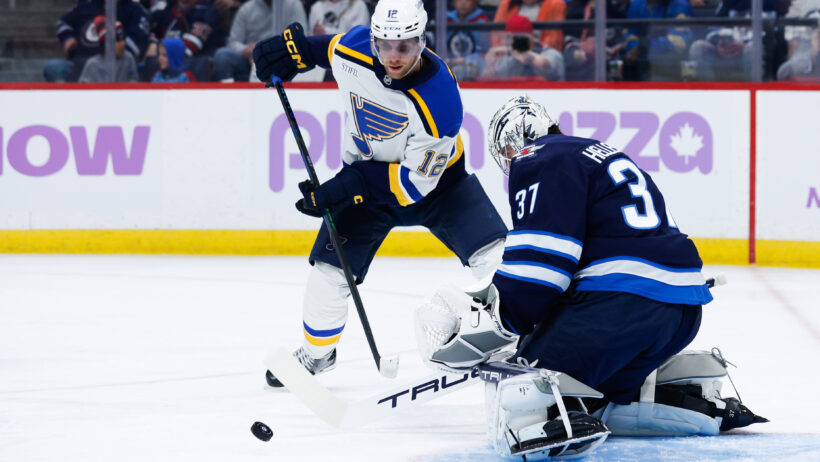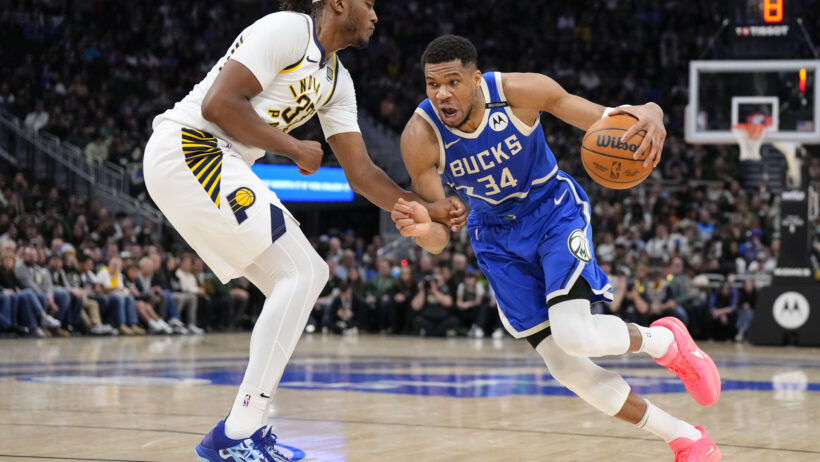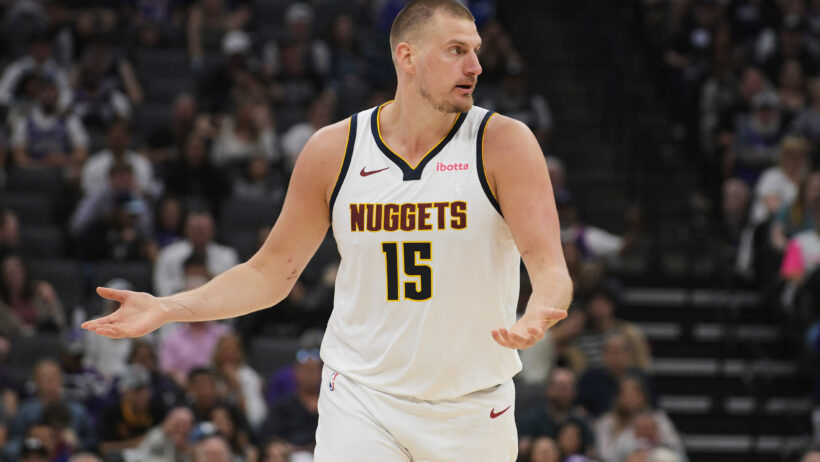March Madness’ Impact on 2018 NBA Draft: Day 1
By Sascha Paruk in College Basketball
Updated: March 29, 2018 at 12:30 pm EDTPublished:
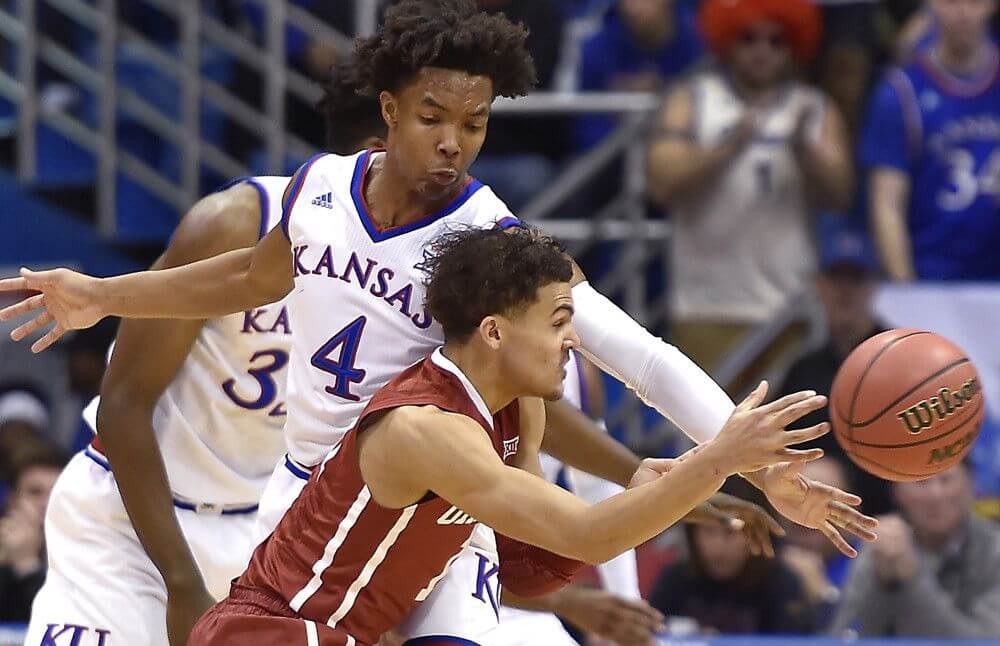
- Have the top NBA prospects hurt or helped their stock in the 2018 NCAA Tournament?
- Marvin Bagley balled out. Did the level of competition render it useless from a draft perspective?
- Players are listed in order of when they played. More players will be added as more games finish.
Trae Young (Oklahoma)
Young didn’t miss a field goal in the first half against Rhode Island (4-4, 10 points), then went quiet for 15 minutes in the second as the Sooners watched a four-point lead turn into a seven-point deficit. When he got aggressive again – at one point scoring 13 straight Oklahoma points – the Sooners came back to force OT (and took an early lead in the extra frame). He showed the iciness of the blood coursing through his veins when he nailed both ends of a 1-and-1 with under 15 seconds to go in regulation.
[Young] showed the iciness of the blood coursing through his veins when he nailed both ends of a 1-and-1 [to tie the game] with under 15 seconds to go.
Ultimately, Oklahoma came up short (83-78) and, on the whole, Young’s performance was what we’ve come to expect: solid shooting (6-12 FG, 2-6 3PT, 7-8 FT), nice vision (7 AST), too many turnovers (6), and mediocre finishing at the rim. His upside will make him a top-ten pick, but he didn’t do anything to convince scouts he’s the next Steph Curry, which is what he needed to do to really boost his stock at this point.
Over/Under 2018 NBA draft position: 7.5
Killian Tillie (Gonzaga)
The 6’10 sophomore picked up two early fouls in the first half and spent the rest of it on the bench. He didn’t attempt a shot in the first 20 minutes as a result. He followed that up by going 1-6 from the field (0-2 3PT) in the second half as the Zags struggled to shed pesky UNC Greensboro. While Gonzaga emerged with a narrow win (68-64), Tillie did nothing to help his stock. The Frenchman had been on the rise thanks to his hot shooting in the WCC tournament (13-14 3PT over three games), which boosted his percentage for the season to 50% (on 2.6 attempts per game).
[If Tillie] follows up this performance with another dud … he could find his forecast fall … to tenuous second-rounder.
There’s no guarantee Tillie leaves for the draft this year, and if he follows up this performance with another dud on the big stage, he could find his forecast fall from late first-rounder to tenuous second-rounder.
That might seem like an overreaction, but Tillie’s late surge came against subpar WCC competition. Gonzaga’s likely second-round opponent is Ohio State, a team they’ve already faced this year. Tillie struggled a bit against the Buckeyes’ 17th-ranked defense, scoring just eight points on 3-8 shooting in 23 minutes. Again, he picked up too many fouls, which limited his time on the floor. He also combined for just 16 points in two games against St. Mary’s, the Zags’ toughest conference competition. Scouts need to see Tillie do more against better teams, his 22-point, eight-rebound performance against Creighton notwithstanding.
Over/Under 2018 NBA draft position: 32.5
Devonte’ Graham (Kansas)
With a frontcourt that’s thinner than Donald Trump’s coif, Kansas needed Devonte’ Graham to be at his best against a solid Penn team in order to avoid the first #1-vs-#16 upset ever. He (almost) was. With his team down by as many as 10 in the first half, Graham marched the Jayhawks all the way back, and then some, pouring in 29 points on 9-24 shooting (3-8 3PT). He also added six boards, six dimes, and three steals, and got to the line with regularity (8-9 FT). It was the latest do-everything performance from Kansas’ do-everything MVP.
Like Frank Mason before him, Graham has intangibles that make up for his good-but-not-elite athleticism.
Graham showed his headiness late in the first half. He recognized that Penn was going to use the foul it had to give and baited them into fouling him on a three. Like Frank Mason before him, Graham has intangibles that make up for his good-but-not-elite athleticism. He’s a borderline first-rounder in most mocks. Another game or two like this in the tournament will make his top-30 status a little more secure.
Over/Under 2018 NBA draft position: 29.5
Marvin Bagley (Duke)
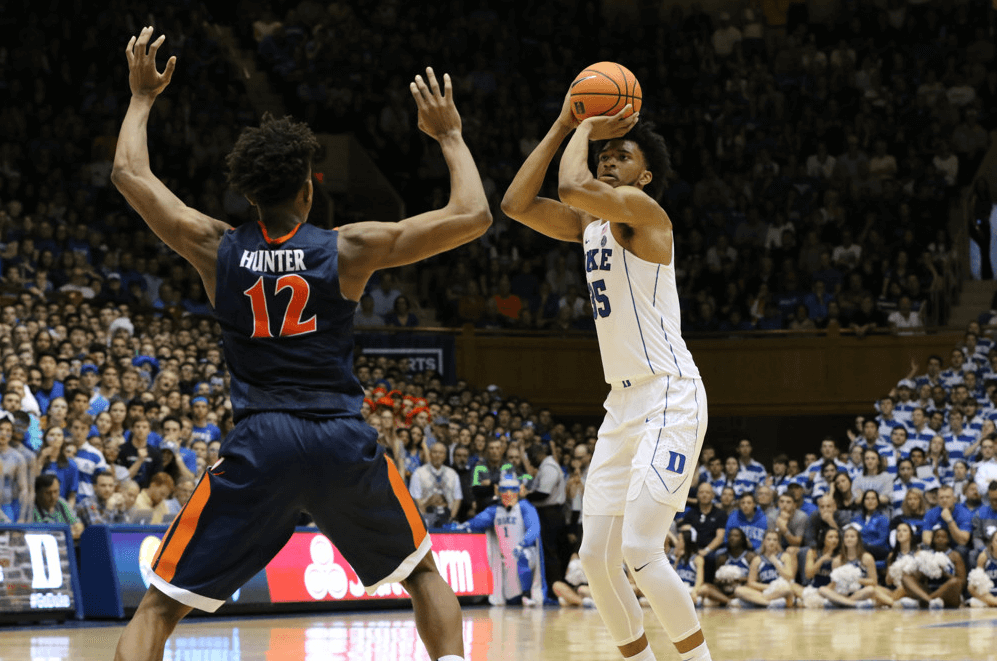
Bagley has looked like a men among boys most of the season, and that continued against an overmatched and undersized Iona team, whose starters are all 6’8 or shorter. He was 6-8 in the first half, when the game was still competitive, and finished 10-14 (1-1 3PT) with 22 points and seven boards.
Realistically, Bagley couldn’t do much to boost his stock in this one. The questions around the 6’11 freshman mostly pertain to his defensive abilities and his positional fit at the next level. After the Iona game, Bagley obviously remains in the conversation to be the #1-overall pick and is a lock to go in the top five, barring injury.
Over/Under 2018 NBA draft position: 3.5
Keita Bates-Diop (Ohio State)
KBD got off to a nice start and had his Buckeyes up big early on South Dakota State, but he went quiet in the back half and finished just 7-19 from the field (4-13 3PT). It would have been nice to see him have more success creating his own shot against lesser Summit League competition, but the length and athleticism of the 6’7 forward were obvious, and that’s what’s going to keep him in the first round in a wing-starved NBA.
The hustle he showed on the offensive glass (five offensive rebounds, 12 total rebounds) was a nice bright spot. As I said going into the tournament, steadier effort was one way Bates-Diop could improve his draft standing.
Over/Under 2018 NBA draft position: 28.5
Rob Gray (Houston)
No one helped their draft stock more on day one than Houston senior Rob Gray. The 6’2 point guard scored a career-high 39 points, including the crafty, game-winning layup with under five to go, against an athletic San Diego State team.

In reality, he’s still a longshot to be drafted. He’s not an elite athlete; he doesn’t shoot well enough from three (35.2% this year); and his accuracy is actually regressing. His three-point percentage dropped a full 3% compared to his junior season (despite taking fewer attempts) while his free-throw percentage fell from 81.3 to 80.3. Not big drops, but still in the wrong direction.
Fred VanVleet’s NBA success may convince a team that Gray’s game will translate. He doesn’t quite have VanVleet’s vision and playmaking, but Gray is a better scorer and Van Vleet had very similar three-point numbers.
Over/Under 2018 NBA draft position: 59.5
Deandre Ayton (Arizona)
Arizona’s nightmare season was mercifully put to rest by #13-seed Buffalo, which cruised to an easy 89-68 win. No one on the Wildcats played well and Buffalo basically dominated from the opening tip. Ayton declared for the draft immediately after, fleeing Sean Miller’s sinking ship.
Ayton was the best of a bad Arizona bunch, scoring 14 points on 6-13 from the field (0-2 3PT) and pulling down 13 rebounds, including five on the offensive end. As he’s done all season, Miller insisted on playing two bigs for almost the entire game, which hinders Ayton more than it helps him. He’d be better off surrounded by shooters, which would give him room to operate down low. Instead, Buffalo was able to collapse on Ayton every time he touched it in the post, resulting in a relatively inefficient night.
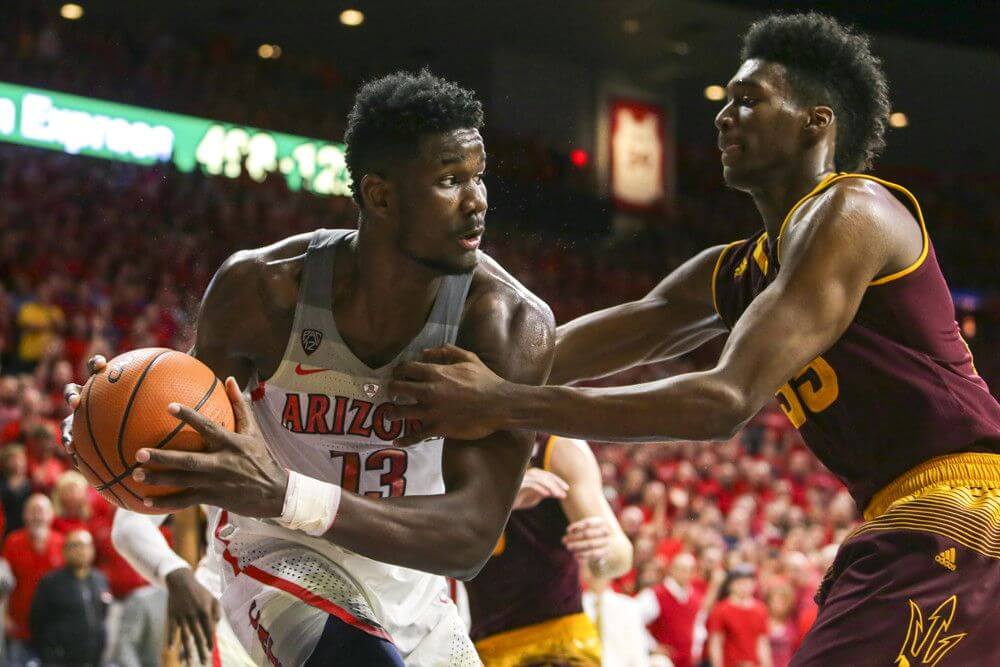
On defense, he showed the ability to stay with smaller, quicker players on the perimeter. We learned very little about his ability to protect the rim: Ikenna Smart and Nick Perkins, the only Buffalo forwards who took more than one shot, attempted just five two-point field goals between them.
Ayton could have boosted his draft stock by putting the Wildcats on his back and willing them to a win. Coming into college, his effort and desire were far bigger question marks than his talent. But Miller’s scheme/Allonzo Trier’s volume shooting basically precluded that. Ayton remains the favorite to go first overall.
Over/Under 2018 NBA draft position: 1.5

Managing Editor
Sascha has been working in the sports-betting industry since 2014, and quickly paired his strong writing skills with a burgeoning knowledge of probability and statistics. He holds an undergraduate degree in linguistics and a Juris Doctor from the University of British Columbia.
